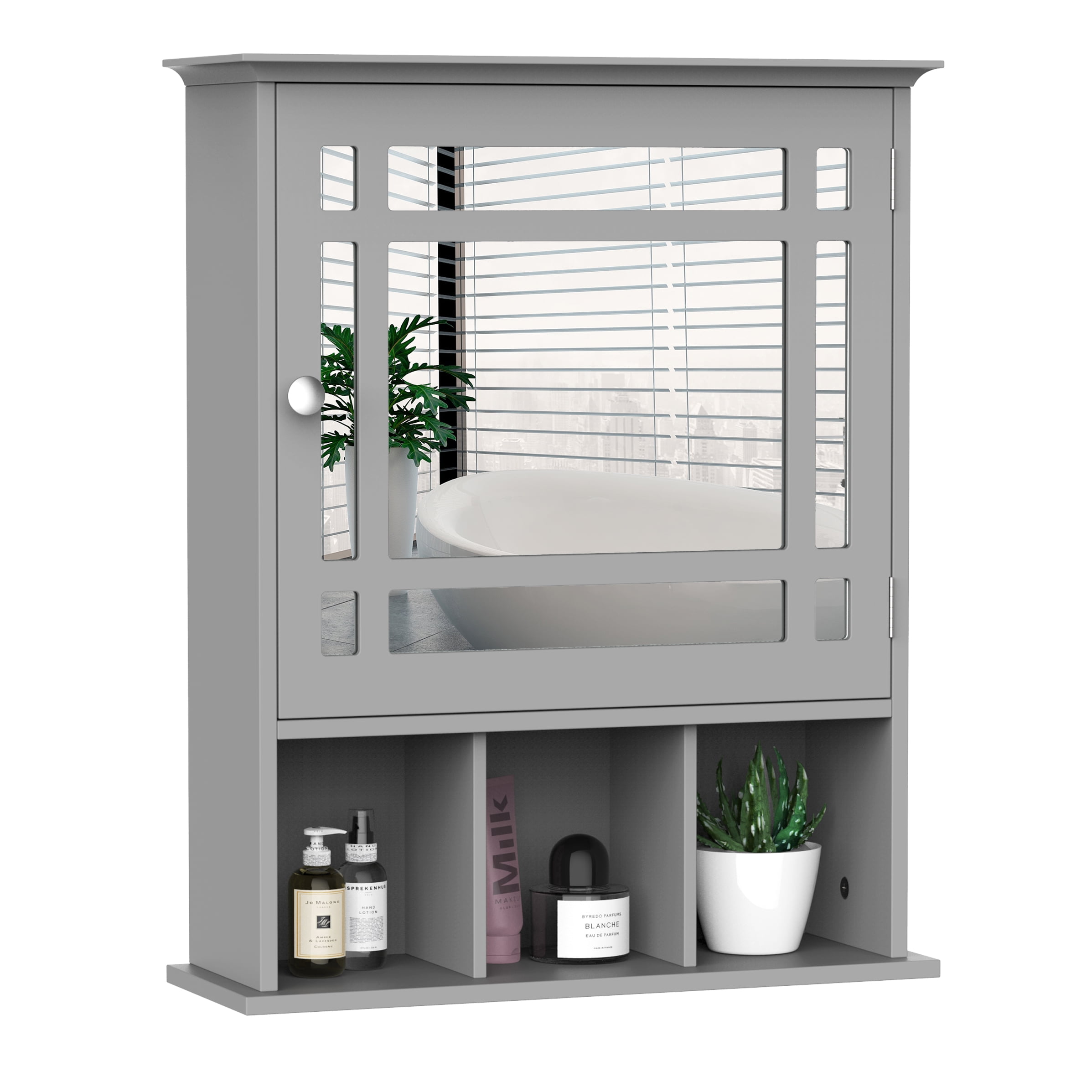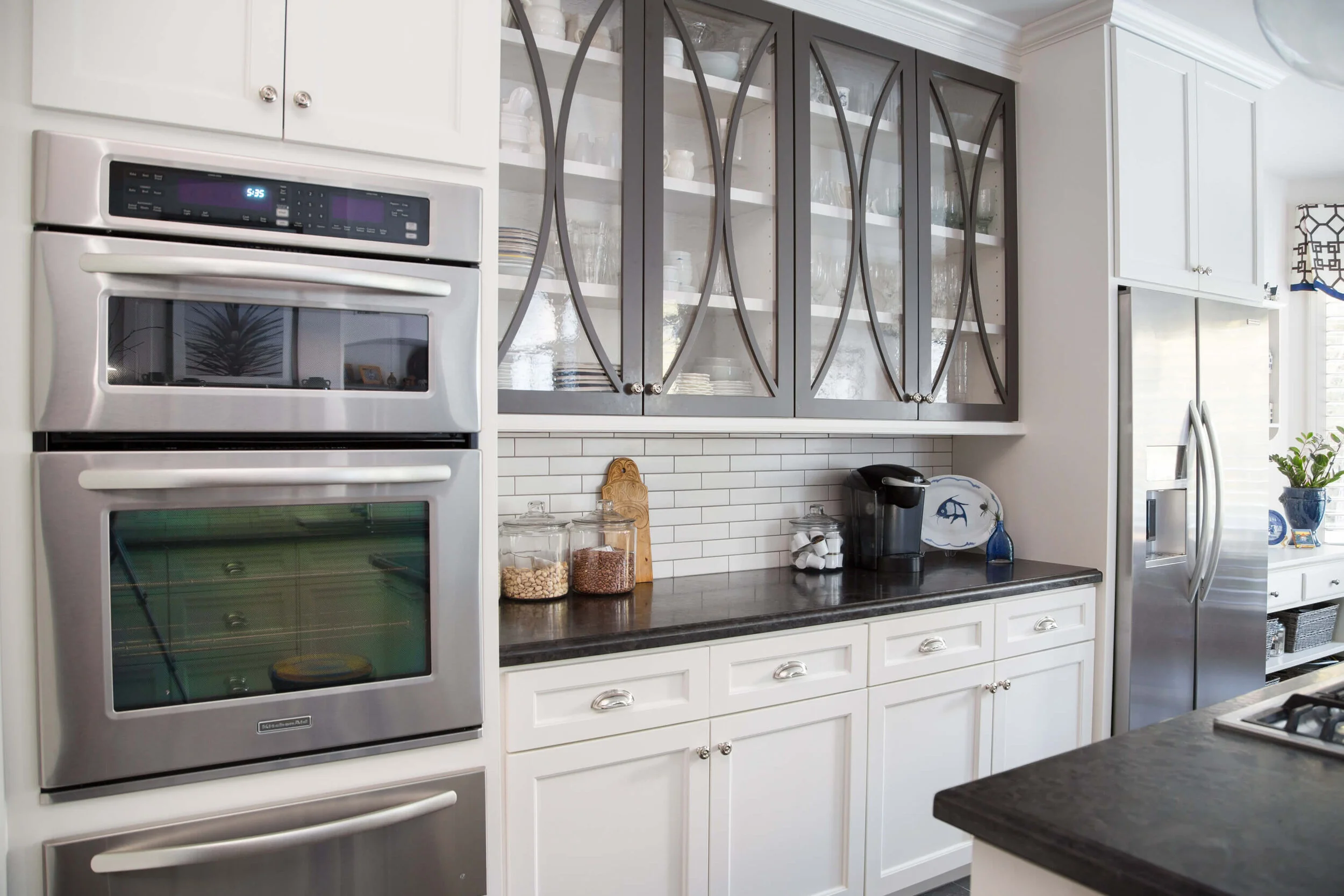Design Considerations for a White High Cabinet with Mirrored Doors

Choosing a white high cabinet with mirrored doors involves careful consideration of several design aspects to ensure it complements your existing décor and serves its intended purpose effectively. The right choice depends on factors ranging from the overall style of your home to the practical needs of the space.
Styles of White High Cabinets with Mirrored Doors
A wide variety of styles are available, catering to diverse tastes and interior design preferences. From sleek, modern designs to more traditional, ornate styles, the options are extensive. The following table provides a glimpse into the range available, although specific models and pricing will vary depending on the retailer and manufacturer. Note that price ranges are approximate and can fluctuate.
| Manufacturer (Example) | Style | Features | Price Range (USD) |
|---|---|---|---|
| Home Decor Solutions | Modern Minimalist | Frameless mirror, sleek handles, adjustable shelves | $500 – $800 |
| Classic Cabinets Inc. | Traditional | Ornate frame, beveled mirror, multiple drawers and shelves | $700 – $1200 |
| Modern Living Designs | Contemporary | Integrated LED lighting, frosted glass accents, soft-close doors | $900 – $1500 |
| Rustic Charm Furniture | Shaker Style | Solid wood construction, simple design, full-length mirror | $600 – $1000 |
Materials Used in Construction
The materials used significantly impact the cabinet’s durability, aesthetic appeal, and overall cost. Common materials include various types of wood, different finishes, and varying qualities of mirrors.
Solid wood, such as oak or maple, offers superior durability and a more luxurious feel. Medium-density fiberboard (MDF) is a more budget-friendly option, but it may be less resistant to damage. Finishes range from high-gloss lacquers to matte paints, influencing the cabinet’s reflectivity and overall look. The quality of the mirror is also crucial; thicker, higher-quality mirrors offer better clarity and durability. Consider the difference between standard mirrors and those with beveled edges for a more sophisticated appearance.
Impact of Mirror Size and Placement
The size and placement of the mirror significantly affect the overall aesthetic and functionality of the cabinet.
- Large, full-length mirrors create an illusion of spaciousness and provide a practical area for getting ready.
- Smaller mirrors, perhaps only covering a portion of the cabinet door, offer a more subtle reflective element, without dominating the space.
- Multiple smaller mirrors arranged in a pattern can create a unique and visually interesting effect.
- Centrally placed mirrors provide symmetrical balance and maximize reflective area.
- Off-center mirror placement can create a more dynamic and visually engaging design.
Incorporating Lighting into the Cabinet Design
Integrated lighting can enhance both the functionality and aesthetics of the cabinet.
Several lighting options exist, each offering a different ambiance and level of practicality. Recessed LED strip lighting provides a sleek, modern look and energy efficiency. Small, puck lights can offer focused illumination within the cabinet. Under-cabinet lighting can illuminate countertops and surrounding areas. The choice depends on personal preference and the desired level of brightness and style. Consider the color temperature of the lighting; warmer tones create a cozy atmosphere, while cooler tones offer a brighter, more modern feel. For example, a warm white LED strip light would be suitable for a traditional-style cabinet, while cool white LED puck lights might complement a modern design.
Functionality and Space Optimization

A high cabinet with mirrored doors offers a stylish and practical storage solution, but its effectiveness hinges on thoughtful planning and organization. Maximizing its functionality requires understanding its capacity compared to alternatives and developing a system for efficient space utilization. This, in turn, allows for seamless integration into various room designs, leveraging the unique properties of mirrored doors.
High cabinet with mirror door white – Let’s delve into how to unlock the full potential of this versatile piece of furniture.
Storage Capacity Comparison
Understanding the storage capacity of a high cabinet with mirrored doors in relation to other options is crucial for making an informed decision. The following comparison highlights the strengths and weaknesses of each:
- High Cabinet with Mirrored Doors: Offers substantial vertical storage, ideal for items used less frequently or those needing to be kept out of sight. The mirrored doors add a visual element, making the space appear larger. However, accessibility to items at the very top may be challenging.
- Standard Wardrobe: Provides ample storage but often lacks the height of a high cabinet. Accessibility is generally better, but may not offer the same storage volume for taller or bulkier items.
- Open Shelving: Offers excellent accessibility but lacks the dust and clutter protection of a cabinet. It also tends to visually clutter a space, unlike a mirrored cabinet which can reflect and enhance the room.
- Chest of Drawers: Provides excellent organization for smaller items but limited vertical storage capacity. It’s ideal for readily accessible items but lacks the overall volume of a high cabinet.
Organizing Items for Maximum Space Efficiency
A well-organized high cabinet significantly enhances its functionality. Implementing a structured system is key to maximizing space and ease of access:
- Assess your belongings: Before placing anything in the cabinet, sort through your items. Discard or donate anything unnecessary.
- Categorize items: Group similar items together (e.g., linens, seasonal clothing, extra blankets). This makes finding specific items much easier.
- Utilize vertical space: Employ shelf dividers, stackable containers, and drawer organizers to maximize vertical space and prevent items from toppling over.
- Use clear containers: Transparent storage containers allow you to see the contents without having to open them, saving time and effort.
- Label everything: Clearly label containers and boxes to instantly identify their contents. This simplifies retrieval and keeps the cabinet organized.
Integration into Different Room Layouts
The versatility of a white high cabinet with mirrored doors allows for seamless integration into various room settings:
Bedroom: Placed in a bedroom, it can serve as a stylish alternative to a traditional wardrobe, storing extra bedding, off-season clothing, or seldom-used items. The mirrored doors can visually enlarge the room, especially in smaller bedrooms. Imagine a white cabinet with mirrored doors tucked into a corner, reflecting light and creating an illusion of spaciousness.
Bathroom: In a bathroom, it can hold towels, toiletries, and cleaning supplies. The mirrored doors provide extra reflective surface area, enhancing the bathroom’s lighting and creating a spa-like atmosphere. Picture a sleek white cabinet, its mirrored doors reflecting the soft glow of bathroom lighting, creating a sense of calm and serenity.
Hallway: A high cabinet can provide valuable storage space in a hallway, ideal for storing coats, hats, gloves, or shoes. The mirrored doors can visually expand the narrow space, adding depth and brightness. Envision a white cabinet strategically placed near the entrance, its mirrored doors reflecting the light and creating a sense of welcome.
Advantages and Disadvantages of Mirrored Doors, High cabinet with mirror door white
Mirrored doors offer both advantages and disadvantages that should be considered:
Advantages: Mirrored doors visually enlarge a space by reflecting light and creating the illusion of depth. They can brighten a room, especially in areas with limited natural light. They also offer a stylish and modern aesthetic.
Disadvantages: The reflective surface can be prone to smudges and fingerprints, requiring more frequent cleaning. The reflection might not be desirable in all settings, potentially creating a cluttered look if the surrounding area is disorganized. Additionally, the reflection can sometimes be distracting.
Manufacturing and Installation: High Cabinet With Mirror Door White
Building a high cabinet with mirrored doors involves a precise process, from careful material selection to the final installation. Understanding each stage ensures a high-quality, durable, and aesthetically pleasing end product. This section details the manufacturing process and provides a guide for professional installation and ongoing maintenance.
Manufacturing Process
The creation of a high cabinet with mirrored doors is a multi-step process requiring precision and attention to detail. The following table Artikels the key steps, materials, and estimated time involved.
| Step | Description | Materials | Time Estimate |
|---|---|---|---|
| 1. Design and Planning | Detailed design specifications are created, including dimensions, materials, and hardware. This involves considering the cabinet’s purpose, intended location, and aesthetic preferences. | Design software, measuring tools, material samples | 2-4 hours |
| 2. Material Cutting and Preparation | Cabinet carcass components (sides, top, bottom, shelves) are cut to precise dimensions from medium-density fiberboard (MDF) or particleboard. Mirror sheets are cut to size, allowing for the door frames. | MDF or particleboard, mirror sheets, cutting tools (circular saw, jigsaw), measuring tools | 4-6 hours |
| 3. Assembly of Cabinet Carcass | Cabinet sides, top, bottom, and shelves are assembled using wood glue and screws. Internal bracing may be added for extra stability, especially for taller cabinets. | Wood glue, screws, drill, screwdriver, bracing materials (wood strips) | 3-5 hours |
| 4. Door Frame Construction | Frames for the mirrored doors are constructed using wood or aluminum, ensuring precise alignment and strength. | Wood or aluminum framing materials, wood glue, screws, measuring tools, miter saw | 2-4 hours |
| 5. Mirror Installation | Mirror sheets are carefully affixed to the prepared door frames using mirror adhesive. This requires precision to avoid air bubbles or imperfections. | Mirror adhesive, mirror sheets, putty knife, clamps | 3-4 hours |
| 6. Hardware Installation | Hinges, handles, and any other necessary hardware are installed on the doors and cabinet. | Hinges, handles, screws, screwdriver | 2-3 hours |
| 7. Finishing and Quality Control | The cabinet is inspected for any imperfections. Any necessary touch-ups or repairs are completed. | Sandpaper, wood filler, paint (if needed) | 1-2 hours |
Professional Installation
Professional installation ensures the cabinet is securely mounted and functions correctly. This requires specialized tools and techniques, including a stud finder to locate wall studs for secure mounting. A level is crucial for ensuring the cabinet is plumb and straight. Appropriate fasteners, such as heavy-duty screws, are essential for secure attachment to the wall. Depending on the cabinet’s weight and size, a second person might be needed to assist with lifting and positioning. Safety glasses and work gloves should always be worn.
Wall Mounting and Stability
Proper wall mounting is paramount for safety and stability. The cabinet should always be mounted to wall studs using appropriate fasteners, never solely relying on drywall anchors. For extra stability, especially with heavier cabinets, consider using multiple mounting points. The cabinet should be level and plumb, ensuring even weight distribution. Pre-drilling pilot holes before fastening prevents splitting of the wood. If the cabinet is exceptionally heavy or tall, professional installation is recommended.
Cleaning and Maintenance
Regular cleaning preserves the cabinet’s appearance and functionality. For the mirrored doors, use a glass cleaner specifically designed for mirrors, applying it with a soft, lint-free cloth. Avoid abrasive cleaners or scouring pads which can scratch the mirror’s surface. For the cabinet itself, a damp cloth with mild soap is generally sufficient. Dry thoroughly to prevent water damage. For stubborn stains, a paste of baking soda and water can be gently applied and then wiped clean. Avoid using excessive water or allowing moisture to accumulate in joints. Periodically check hinges and hardware, tightening loose screws as needed to maintain proper function.

